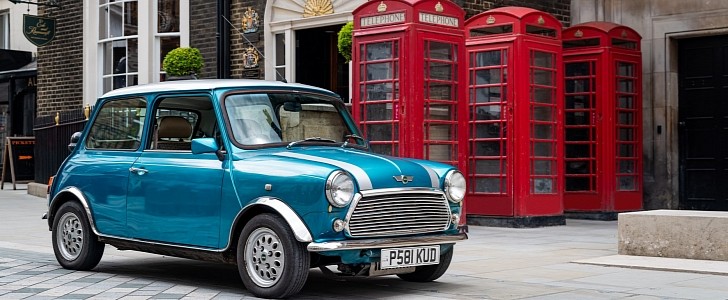Electric cars – converted or born like one – need to be affordable. That’s a must to increase their adoption. When Swindon Powertrain said it would sell an electric classic Mini for £79,000 under the name Swind E, it may have inspired London Electric Cars to offer a less expensive version. We’ll probably never know that for sure, but the fact is that you can now have an electric classic Mini for £25,000 – with some catches.
The most important one is that the car itself is not included. In the UK, you can buy one from £5,000 to up to £40,000, depending on what you want. The conversion also does not include local taxes and shipping costs.
What London Electric Cars will get you for the 25,000 Pounds Sterling (around $35,000) are components from the Nissan Leaf, such as the motor and a 20 kWh battery pack. Considering the first Leaf units had a 24 kWh battery pack, it seems the British company managed to include almost all cell modules in the converted Minis.
That arrangement allows the Mini to have a range between 60 miles to 70 miles (100-120 km). The air-cooling system for the battery pack is not the most reliable, but it is not as complex as liquid cooling. That certainly made the electric Mini conversion a more straightforward process. Despite that, London Electric Cars can take up to six months to get the Mini running on electricity.
Apart from costing only 5 pence per mile, the electric Mini is also exempt from road tax, Congestion Charge, and ULEZ. These monetary advantages may help amortize the conversion investment, but that would undoubtedly be easier if the converted Mini were able to travel further. However, for people who can charge it at home and plan to use it only in the urban cycle, that will probably not be an issue.
What London Electric Cars will get you for the 25,000 Pounds Sterling (around $35,000) are components from the Nissan Leaf, such as the motor and a 20 kWh battery pack. Considering the first Leaf units had a 24 kWh battery pack, it seems the British company managed to include almost all cell modules in the converted Minis.
That arrangement allows the Mini to have a range between 60 miles to 70 miles (100-120 km). The air-cooling system for the battery pack is not the most reliable, but it is not as complex as liquid cooling. That certainly made the electric Mini conversion a more straightforward process. Despite that, London Electric Cars can take up to six months to get the Mini running on electricity.
Apart from costing only 5 pence per mile, the electric Mini is also exempt from road tax, Congestion Charge, and ULEZ. These monetary advantages may help amortize the conversion investment, but that would undoubtedly be easier if the converted Mini were able to travel further. However, for people who can charge it at home and plan to use it only in the urban cycle, that will probably not be an issue.















